Pan Am Series – Part XXVII: Clipper Cargo
24 February 2014 2 Comments
Pan American’s All-Cargo Service
Pan American World Airways has always been associated with passenger service, however what is often overlooked is the fact that Pan American was a leader in air cargo and was, in fact, a pioneer in all-cargo flight operations.
The history of Pan American’s all-cargo operations can go as far back as early World War II, when, in 1942, the airline operated international airline service with all-cargo aircraft using DC-4s (Army C-54/Navy R5D) and Coronados (PB2Y). The total cargo carried from 1941 through 1943 rose exponentially from 14,792,441 pounds in 1941 to 84, 545,010 pounds in 1943. In addition, Pan American’s 1943 Annual Report announced:
“The first scheduled all-cargo service was inaugurated . . . between North and South America. This service to Brazil has provided rapid transit for both war materials and commercial cargoes. Sikorsky Clippers stripped of 2,500 pounds of luxury passenger equipment ns capable of carrying four tons of cargo, are used.”
By 1945, Pan American was, according to the annual report of that year, offering “the first commercial transatlantic all-freight service. Regularly scheduled all-cargo Clippers [were] operated by Pan American on several routes.” DC-4s (former Army C-54s) operated on these routes. In 1948, the all-cargo fleet received an influx of ten Curtis C-46 Commandos (the Army C-55) that operated primarily in the Caribbean, although some ventured as far south as Brazil and Argentina. The 1948 annual report noted that Pan American has “[s]ixteen special all-cargo Clippers [to] supplement cargo capacity of the passenger Clippers.”
Below is illustrated a 1948 advertisement for Clipper Cargo and a page from the 1948 Annual Report showing cargo loading operations on Pan American’s two all-cargo-type aircraft, the DC-4 and C-46. A caption on this page notes that it is cheaper to ship a private aircraft than to fly it to its destination.
The the schedules of all-cargo flights did not appear in any of Pan American’s timetables issued prior to 1950 reviewed for this article. South American all-cargo flight schedules appeared in a 1950 timetable using C-46 aircraft. In a 1952 timetable, the South American flights included the DC-4 as well as the DC-6A. All-cargo flights in other parts of Pan American’s system did not appear in these two timetables.
In a 1956 timetable, transatlantic all-cargo flights were included as well as South American, with the former using DC-4 and DC-6A equipment. In a 1959 timetable, the DC-6A was used on transatlantic flights and the C-54 (DC-4) used primarily on South American routes (page not shown).
By 1961, Boeing 707 passenger jets had been introduced to Pan American’s fleet and because of this, some of the airline’s fleet of DC-7C aircraft were converted to an all-cargo configuration. According to the 1961 Annual Report:
“Conversion of 13 DC-7Cs to all-cargo configuration with 20-ton payload capacity on a transatlantic flight. Each is designed for “’AirPak’ the new cargo loading system developed by Pan American. Using pre-loaded pallets, AirPak reduces aircraft-loading time to less than an hour, provides improved services for shippers and increases utilization of aircraft.”
Utilization of the DC-7CF on transatlantic all-cargo flights were included in the 1961 timetable. The C-54 (DC-4) was deployed in South American operations. In a 1965 timetable, Boeing 707-321C jet freighters had been introduced into service, primarily on the transatlantic routes. Interestingly enough, the South American all-cargo service included not only jet freighters, but DC-7Cs and DC-6As as well. By 1966, the DC-7CFs had dropped off the timetable leaving just a couple of DC-6As on a handful of flights in South America. This marked the end of the piston all-cargo operations.
The 1960s saw a remarkable growth in Pan American’s all-cargo operations, and in the 1967 Annual Report, it was noted that “Pan Am again was the world’s leading air cargo carrier. Pan Am flew 605,500,000 cargo ton-miles, up 15.2 per cent, compared to 1966. * * * In five years, the cost to the average shipper was cut by 25.7 per cent to a new low yield of 20.5 cents per ton-mile.”
Going into the 1970s, cargo growth continued. In the 1972 Annual Report, it was noted that new freighter services were introduced to South America and a South Pacific freighter began new operations providing the only service of this type between the West Coast of the united States and Australia/New Zealand. The report also noted that new cargo centers were opened at off-line stations and new cargo terminal facilities opened in Rome, Lisbon, New Delhi, Osaka and New Orleans. New services were also announced for the next year, 1973, including additional freighter between New York and Latin America, New York and Tokyo and across the Atlantic, and new service between New York and Africa. The report also noted that Pan Am “lead the free world in air cargo tonnage”.
During this period, the 707-321C was the mainstay of Pan American’s jet freighter fleet, operating throughout the world as illustrated in 1971 and 1974 timetables:
In 1977, cargo operations continued to grow, carrying more tons of freight and earning more revenue than ever before. It was also announced in the annual report of that year that Pan Am would develop a Five-Year Plan to improve cargo profits by maximizing utilization of passenger aircraft cargo space and increasing the number of 747 freighters in the fleet. The annual report also noted that Pan Am is “one of the world’s largest and most experienced air freight carriers, . . [and] [i]ts fleet of 747 freighters – the largest in the industry – and 707 all-cargo jets, plus the extensive cargo space of its passenger aircraft, give it unmatched capacity. Pan Am’s route system, serving 93 cities in 62 lands, literally covers the world for shippers”.
In 1978, cargo volume and revenue set new records and, according to the 1978 Annual Report, Pan Am regained its position as the “world’s number one carrier of scheduled international air cargo. By the end of 1978, the last of the 707s was retired, making the Clipper Cargo fleet all wide-body with six 747 freighters. The fleet evolved from seventeen 707s to the six 747s over the decade and this prompted some scheduling and aircraft utilization changes to maximize the economic potential of the 747. This was done through increasing daily utilization, reducing short-haul segments and increasing available capacity.
During this period was the domestic deregulation of the cargo market. This gave Pan American domestic authority in cargo markets, giving the airline new benefits. Thus, for example, adding Chicago to a transcontinental-South Pacific routing would provide additional revenue from the New York-Chicago-San Francisco-Honolulu segments, previously unavailable to Pan American.
Going into the 1980s, Clipper Cargo remained an important part of Pan American’s operations. Freighter service was restructured to improve profitability by emphasizing high volume markets. In addition, the control of containers used on wide-body aircraft for the loading of cargo and baggage was computerized through “Pantrac”, Pan American’s world-wide cargo reservations tracking system. This increased the efficiency of tracking containers, maximizing use and reducing the need to invest in new equipment.
In addition, taking advantage of the deregulation of cargo operations in the United States and the expansion of domestic services, Pan American took the lead, according to its 1979 Annual Report, in introducing the lowest domestic container rates available. Called the “79ers”, these rates made it possible for domestic shippers to ship by air at rates comparable to “LTL” (less than truckload) truck costs. Also introduced was a service for small packages called the “Clipper Package Service”, offering either expedited airport-to-airport or desk-to-desk service at the option of the customer.
Below are timetable pages from 1977 and 1980. Note the extent of world-wide cargo operations in the former. In the latter, the all cargo flights were incorporated into the passenger schedules.
From the cargo perspective, things looked quite encouraging for Pan American at the start of the 1980s. But it was not to be. It is difficult to really explain what happened. Perhaps it was the competition from the likes of Federal Express who revolutionized small package service and eventually flexed its wings overseas. Or perhaps it was the fact that Pan American was losing money and needed cash. During that time, the airline began selling any expendable assets it had. Apparently the 747 freighters fell in that category. In any case, Pan American piece-by-piece reduced its all-cargo operation starting in 1982 when then Pan American CEO C. Edward Acker started selling off the Boeing 747 freighter fleet. The last was sold to Japan Airlines in 1983. Thus came to an end, “Clipper Cargo”.
For additional information about Pan American World Airways:
To learn more about the history of this pioneering airline, click on the title below for preview of
Pan American World Airways – Images of a Great Airline Second Edition.
This book is available on eBay .
Another excellent book is Pan Am – Personal Tributes to a Global Aviation Pioneer, which was published to commemorate the 90th Anniversary of Pan Am’s founding. It contains more than 80 stories written by former Pan Am employees and international media friends who had personal experience with many of Pan Am’s key events during its history. It is the perfect companion to Pan American World Airways – Images of a Great Airline Second Edition and can be purchased on Amazon.
Preview Pan American World Airways – Aviation History Through the Words of its People, which is available on Amazon.
For further information about the history of Pan American World Airways, visit: Pan Am Historical Foundation



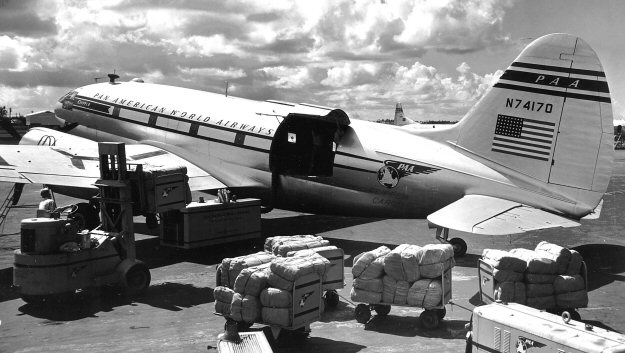














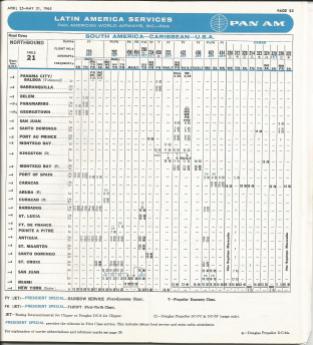





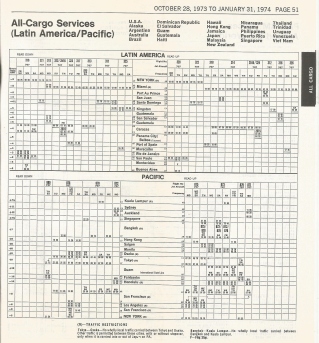




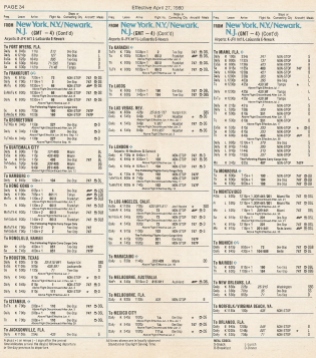



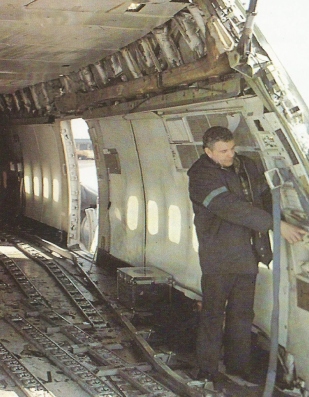








































































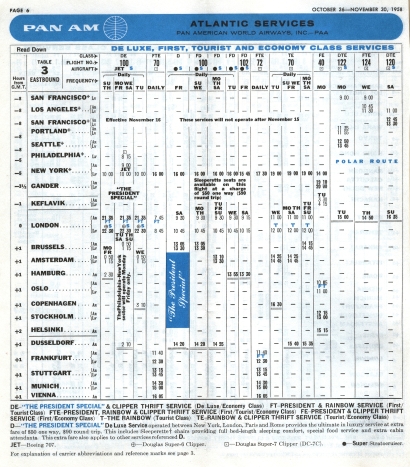


Recent Comments